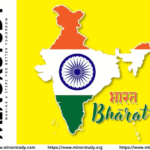Vrishabhotsav is a Joyful Festival of Tradition and Faith
Introduction
India is a land of festivals, each one weaving together threads of faith, tradition, and community life. Among the lesser-known yet culturally rich celebrations stands Vrishabhotsav, a festival deeply connected with agrarian traditions, spirituality, and the reverence for cattle. The name itself comes from the Sanskrit word Vrishabha, meaning bull (Nandi), and Utsav, meaning festival.
- Introduction
- 📖 History of Vrishabhotsav
- 📅 Timeline of Vrishabhotsav
- 🌍 Important Facts about Vrishabhotsav
- ✨ Significance of Vrishabhotsav
- 🎉 Observance of Vrishabhotsav
- 🙏 Wishing on Vrishabhotsav
- 💡 Importance in Our Life and Society
- 📖 FAQs about Vrishabhotsav
- 🔎 Review Section – Public Sentiment
- ✅ Conclusion – Daily Life Impacts
Vrishabhotsav is celebrated in different regions of India, especially in rural communities, to honor bulls and cattle, who are considered sacred and vital partners in agriculture. In Hindu tradition, bulls are not just animals—they are revered as symbols of strength, fertility, devotion, and service. Most importantly, bulls are associated with Lord Shiva, whose mount (vahana) is Nandi, the sacred bull.
This article covers Vrishabhotsav’s history, timeline, facts, FAQs, significance, observance, wishes, importance in daily life, and a review section, giving you a complete insight into this meaningful celebration.
📖 History of Vrishabhotsav
The roots of Vrishabhotsav go back to ancient agrarian societies of India, where cattle played a central role in farming and village life. Bulls were essential for ploughing the fields, transporting goods, and sustaining rural economies.
Over time, reverence for bulls entered spiritual traditions, particularly in Shaivism. Nandi, the bull of Lord Shiva, became a central figure of devotion, symbolizing patience, strength, and unwavering faith. Festivals like Vrishabhotsav evolved as a way to thank and honor bulls for their role in human survival and as a mark of gratitude to divine forces for agricultural prosperity.
In many regions, especially in South India, Maharashtra, and Karnataka, the festival is celebrated after the monsoon harvest season, coinciding with other cattle-centered festivals like Pola or Mattu Pongal. Each community adds its local flavor, but the core idea remains the same—celebrating bulls with rituals, decorations, and community feasts.
📅 Timeline of Vrishabhotsav
Ancient Period – Emerged as a ritual in Vedic and agrarian traditions, connected with the worship of cattle.
Early Medieval Era – Incorporated into Shaiva practices, linking bulls with Nandi and Shiva temples.
Medieval Period – Villages across South India, Maharashtra, and Karnataka institutionalized Vrishabhotsav as a yearly cattle festival.
Modern Times – Still celebrated in rural India as a community gathering, though urban awareness is growing due to cultural revival movements.
🌍 Important Facts about Vrishabhotsav
Vrishabha means bull, and it is also the name of the second sign in the Hindu zodiac (Taurus).
Bulls are decorated with paint, ornaments, and colorful clothes during the festival.
Rituals include worship, aarti, and parikrama of bulls, sometimes even in temples of Lord Shiva.
Farmers conduct special poojas to thank the bulls for their hard work in the fields.
Community feasts and cultural programs accompany the celebrations.
Vrishabhotsav also promotes animal care and welfare, highlighting the need to respect cattle.
In some regions, traditional bullock cart races and fairs are organized as part of the festivities.
It is closely linked to other cattle festivals like Pola (Maharashtra), Mattu Pongal (Tamil Nadu), and Godhan Pooja (North India).
Spiritually, the bull is a reminder of Dharma (righteousness), as Nandi sits calmly at the feet of Lord Shiva, listening to His eternal truths.
✨ Significance of Vrishabhotsav
Vrishabhotsav holds deep layers of significance:
Agricultural Significance – A festival of gratitude towards bulls who plough the fields, ensuring food security.
Spiritual Significance – Honoring Nandi, who represents strength, patience, and devotion to Lord Shiva.
Social Significance – Brings the community together through processions, fairs, and collective worship.
Cultural Significance – Preserves traditional practices, folk art, and agrarian customs.
Environmental Significance – Promotes sustainable farming, reminding us of the bond between humans, animals, and nature.
🎉 Observance of Vrishabhotsav
Vrishabhotsav is observed in different styles across India, but some common practices include:
Morning rituals: Bulls are bathed, cleaned, and decorated with flowers, colors, and ornaments.
Temple worship: Farmers take their bulls to nearby temples, especially Shiva temples, where they are blessed.
Community gathering: Villagers organize cultural programs, folk dances, and songs.
Bull processions: Decorated bulls are paraded in the streets, accompanied by music and celebration.
Feasts and fairs: Special meals are prepared, and cattle races or competitions are sometimes held.
🙏 Wishing on Vrishabhotsav
Here are some heartfelt wishes for the occasion:
🌿 “Happy Vrishabhotsav! May the blessings of Nandi and Lord Shiva bring strength, prosperity, and happiness to your home.”
🚩 “Vrishabhotsav reminds us of the sacred bond between humans and nature. Wishing you a day of gratitude and devotion.”
🌕 “On this Vrishabhotsav, let us honor the hard work of our bulls and farmers who feed the nation.”
💡 Importance in Our Life and Society
Even in modern times, Vrishabhotsav remains highly relevant:
For Farmers – A reminder to respect the role of animals in agriculture.
For Society – Highlights compassion and gratitude as core values.
For Youth – Inspires them to appreciate traditions and natural resources.
For Spiritual Seekers – Teaches the values of patience, faith, and humility embodied by Nandi.
For Environment – Promotes harmony with animals and sustainability in farming.
📖 FAQs about Vrishabhotsav
Q1. What is Vrishabhotsav?
➡ Vrishabhotsav is a festival dedicated to honoring bulls, symbolizing gratitude for their role in agriculture and devotion to Lord Shiva’s mount, Nandi.
Q2. Where is Vrishabhotsav celebrated?
➡ It is celebrated in parts of South India, Maharashtra, and Karnataka, with variations across regions.
Q3. Why are bulls decorated on this day?
➡ Bulls are decorated to express respect and gratitude, acknowledging their importance in farming and cultural life.
Q4. Is Vrishabhotsav linked to Lord Shiva?
➡ Yes, since Nandi, the bull, is Lord Shiva’s mount and the guardian of Dharma.
Q5. How does Vrishabhotsav impact daily life?
➡ It teaches values of gratitude, sustainable living, and respect for animals.
🔎 Review Section – Public Sentiment
⭐⭐⭐⭐⭐ “Vrishabhotsav is a beautiful festival that blends tradition with gratitude. Truly heartwarming to see bulls honored like family.”
⭐⭐⭐⭐ “The decorations and rituals are unique. It’s an underrated festival that deserves more recognition.”
⭐⭐⭐ “Though celebrated mostly in rural India, Vrishabhotsav has deep spiritual meaning for all Hindus.”
⭐⭐⭐⭐⭐ “A joyful reminder of our roots, nature, and culture—Vrishabhotsav is simple yet profoundly meaningful.”
✅ Conclusion – Daily Life Impacts
Vrishabhotsav is not just about bulls—it is about acknowledging the interdependence of humans, animals, and nature. By celebrating this festival, communities:
Strengthen their cultural bonds.
Express gratitude to animals who contribute to agriculture.
Keep alive the spiritual connection with Nandi and Lord Shiva.
Teach future generations the importance of respect, patience, and devotion.
In daily life, Vrishabhotsav inspires us to:
Be grateful for the resources and support we often take for granted.
Live in harmony with nature and animals.
Preserve traditions that keep us grounded in values.
In short, Vrishabhotsav is a festival of gratitude, faith, and sustainability, making it a timeless celebration that continues to inspire society today.








